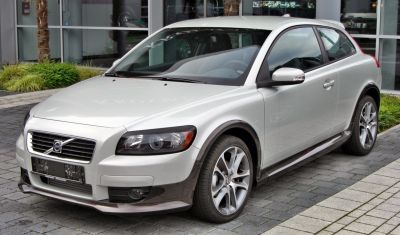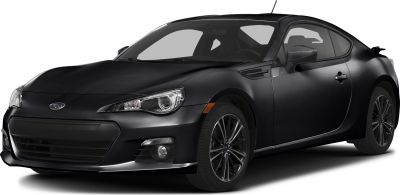 2013 Seat Leon III SC Dimensions, Size & Specs
2013 Seat Leon III SC Dimensions, Size & SpecsMeasurements of the 2013 Seat Leon III SC, engineered for optimal performance and comfort
| Dimensions | |
|---|---|
| Length: | 4228-4263 mm166.5-167.8 in13.9-14.0 ft |
| Width: | 1810-1816 mm71.3-71.5 in5.9-6.0 ft |
| Width (Opened Mirrors): | 1975 mm77.8 in6.5 ft |
| Height: | 1423-1459 mm56.0-57.4 in4.7-4.8 ft |
| Ground Clearance: | 144 mm5.7 in0.5 ft |
| Trunk Capacity: | 275-380 liter9.7-13.4 cu ft |
| Trunk Capacity (Max): | 1105-1150 liter39.0-40.6 cu ft |
| Weight Specifications | |
| Curb Weight: | 1114-1370 kg2456-3020 lbs |
| Maximal permitted Weight: | 1700-1890 kg3748-4167 lbs |
| Roof Load: | 75 kg165 lbs |
| Tire Specifications | |
| Rims Sizes: | 18-inch rims:
|
| Tire Sizes: |
|
The Seat Leon III SC generation, produced from 2012 to 2016, is a compact coupe that combines sporty styling with practical dimensions and versatile usability. The Leon III SC measures between 4228 mm and 4263 mm in length (approximately 166.4 to 167.8 inches), giving it a sleek and agile profile ideal for urban and suburban driving. Its width varies from 1810 mm to 1816 mm (71.3 to 71.5 inches), expanding to 1975 mm (77.8 inches) when the side mirrors are opened, ensuring a stable stance on the road while still maintaining good maneuverability. The height spans from 1423 mm to 1459 mm (56.0 to 57.4 inches), contributing to its aerodynamic silhouette and sporty coupé aesthetics.
Weight-wise, the Seat Leon III SC ranges from a curb weight of 1114 kg to 1370 kg (2457 to 3020 pounds), with a maximum permissible weight between 1700 kg and 1890 kg (3748 to 4167 pounds). These figures reflect a well-balanced chassis designed for both performance and efficiency. The car's ground clearance is 144 mm (5.7 inches), providing a decent ride height suitable for everyday driving conditions.
Luggage capacity in the Leon III SC varies from 275 liters to 380 liters (9.7 to 13.4 cubic feet) with the rear seats up, accommodating daily storage needs comfortably. When the rear seats are folded down, the capacity expands significantly to between 1105 liters and 1150 liters (39.0 to 40.6 cubic feet), enhancing the car's practicality for larger cargo.
The Seat Leon III SC supports a roof load of up to 75 kg (165 lbs), useful for rooftop carriers or lightweight cargo boxes. Rims and tire sizes are diverse, ranging from 15 to 19 inches in diameter, including rim widths from 6.5J to 8.8J, paired with tire sizes like 225/40 R18, 235/35 R19, and 195/65 R15, allowing choice for performance or comfort depending on the specific configuration.
Overall, the Seat Leon III SC coupe offers a balanced blend of compact dimensions, versatile cargo space, and driver-oriented characteristics, making it a suitable choice for those seeking a sporty yet practical vehicle in the compact coupe segment.
Discover the standout features that make the 2013 Seat Leon III SC a leader in its class
Have a question? Please check our knowledgebase first.
The Seat Leon III SC coupe produced between 2013 and 2016 has a length ranging from 4228 mm to 4263 mm (166.4 to 167.8 inches). Its width varies between 1810 mm and 1816 mm (71.3 to 71.5 inches), and the width including opened mirrors extends up to 1975 mm (77.8 inches). The height ranges from 1423 mm to 1459 mm (56.0 to 57.4 inches). These dimensions make the Leon III SC a compact yet sporty coupe with a balanced stance that enhances both aerodynamic performance and aesthetics.
The curb weight of the Seat Leon III SC ranges from approximately 1114 kg to 1370 kg (2457 to 3020 pounds), depending on the specific configuration and trim level. The maximum permissible weight, which includes passengers and cargo, is between 1700 kg to 1890 kg (3748 to 4166 pounds). This weight range reflects the car's versatile nature, balancing a lightweight structure for agile performance with the ability to carry sufficient load for everyday use.
The Seat Leon III SC’s luggage capacity varies between 275 and 380 liters (about 9.7 to 13.4 cubic feet) when the rear seats are in their standard upright position. This is suitable for everyday groceries or a small amount of luggage. When the rear seats are folded down, the luggage capacity increases significantly to between 1105 and 1150 liters (39.0 to 40.6 cubic feet), allowing for much larger cargo, such as sports equipment or larger suitcases, making the vehicle practical for both daily use and longer trips.
The Seat Leon III SC has a ground clearance of approximately 144 mm (5.7 inches). This relatively low ride height contributes to improved handling and stability, especially at higher speeds and cornering since it lowers the car’s center of gravity. However, the low ground clearance means care should be taken when driving over speed bumps or rough terrain to avoid undercarriage contact or damage. It is optimized for urban and highway use, emphasizing sporty and responsive driving characteristics.
The Seat Leon III SC came with several rim size options ranging from 15 inches to 19 inches. Available rim sizes included 7.5J x 18, 8J x 19, 7.5J x 19, 6J x 17, 6.5J x 15, 7J x 16, and 7J x 17. Corresponding tire sizes were 225/40 R18, 235/35 R19, 225/35 R19, 225/45 R17, 195/65 R15, and 205/55 R16. These options allowed buyers to balance between sporty performance with larger wheels and comfort with smaller wheels, tailored to personal preference and driving style.
Yes, the Seat Leon III SC generally fits comfortably into a standard garage. With a length of up to 4263 mm (approximately 16.7 feet) and a width of up to 1816 mm (about 6 feet) excluding mirrors—or roughly 1975 mm (6.5 feet) including mirrors—it fits within typical garage dimensions that are usually about 6 meters (20 feet) deep and 3 meters (10 feet) wide or more. Nonetheless, drivers should be mindful of mirror clearance when parking in narrower spaces to prevent damage.
Compared to the preceding Seat Leon II SC, the Leon III SC displays subtle dimension increases that enhance interior space and stability. The Leon III SC is slightly longer, with a length generally increased by a few centimeters (roughly from about 4210 mm to 4263 mm), the width has also been marginally increased to around 1810-1816 mm, contributing to better road presence and interior comfort. Height remains similar but the modernized design improves aerodynamics and overall driving dynamics. This incremental growth in size does not compromise the nimble character of the Leon but rather refines it.
The Seat Leon III SC fits well within the compact coupe segment, offering dimensions comparable to competitors like the Volkswagen Golf GTI, Ford Focus Coupe, and Audi A3 Sportback. Its length around 4.23 meters (13.9 feet) and width near 1.8 meters (6 feet) place it comfortably within the class average, balancing sporty styling with practical packaging. Its cargo capacity and cabin space are competitive, often providing slightly more luggage volume than some rivals, especially when rear seats are folded. This makes the Leon III SC an attractive choice for buyers looking for a stylish compact coupe without sacrificing usability.
The Seat Leon III SC’s compact dimensions allow for relatively easy maneuvering and parking in urban environments. With a length of just over 4.2 meters (about 13.8 feet) and a moderate width, it is shorter and narrower than many SUVs and larger hatchbacks, simplifying tight parking situations and narrow street navigation. The car’s turning radius, while not specified here, benefits from the coupe’s compact footprint. However, drivers should consider the broader width with mirrors extended (1.98 meters or approximately 6.5 feet) when navigating tight parking spaces or narrow parking garages.
The Seat Leon III SC has a roof load capacity of 75 kg (approximately 165 pounds). This weight limit includes the combined weight of any roof rack and its cargo. When installing roof racks, it's important to ensure that the total load—racks plus items such as luggage boxes, bicycles, or sports equipment—does not exceed this limit to avoid damaging the roof structure or affecting the vehicle’s handling. The 75 kg capacity is typical for compact coupes and sufficient for most light to medium-duty transportation needs.
Discover similar sized cars.

| Production: | 2010-2013 |
|---|---|
| Model Year: | 2010 |
| Length: | 4266 mm168.0 in |
| Width: | 2039 mm80.3 in |
| Height: | 1447 mm57.0 in |

| Production: | 2006-2010 |
|---|---|
| Model Year: | 2007 |
| Length: | 4252 mm167.4 in |
| Width: | 2039 mm80.3 in |
| Height: | 1447 mm57.0 in |

| Production: | 2012-2016 |
|---|---|
| Model Year: | 2012 |
| Length: | 4240 mm166.9 in |
| Width: | 1775 mm69.9 in |
| Height: | 1425 mm56.1 in |
